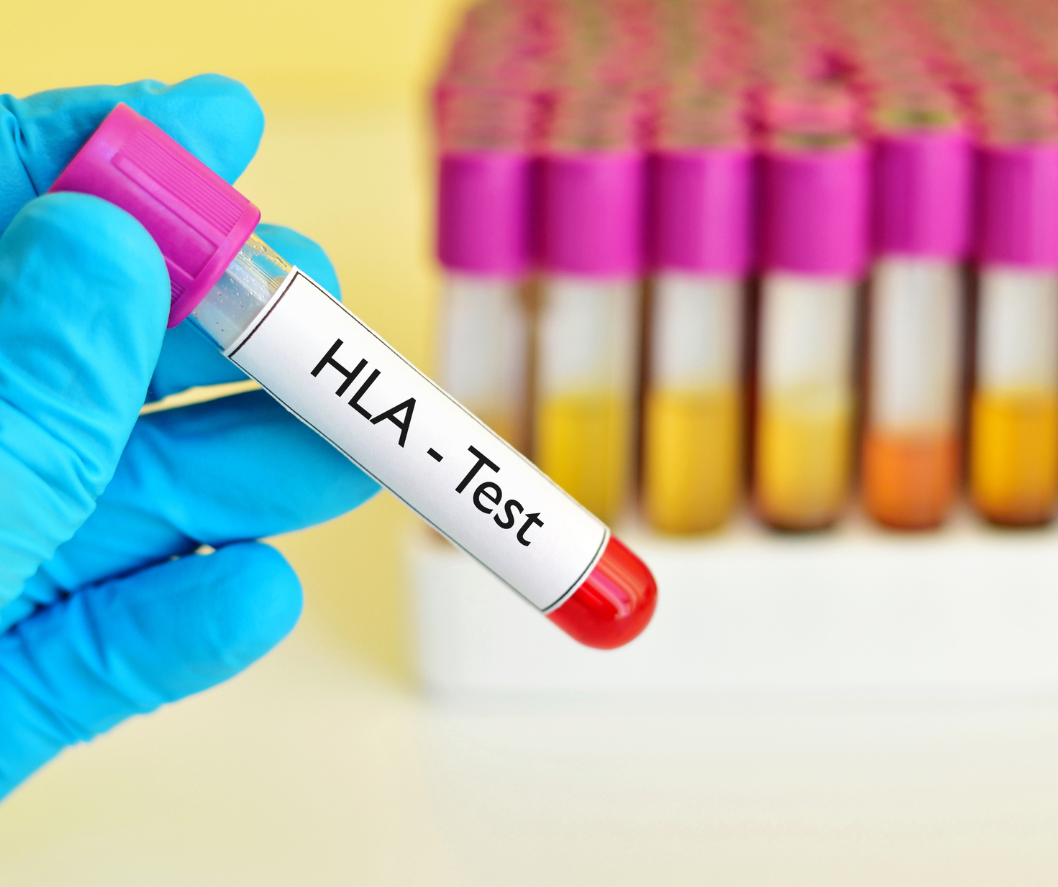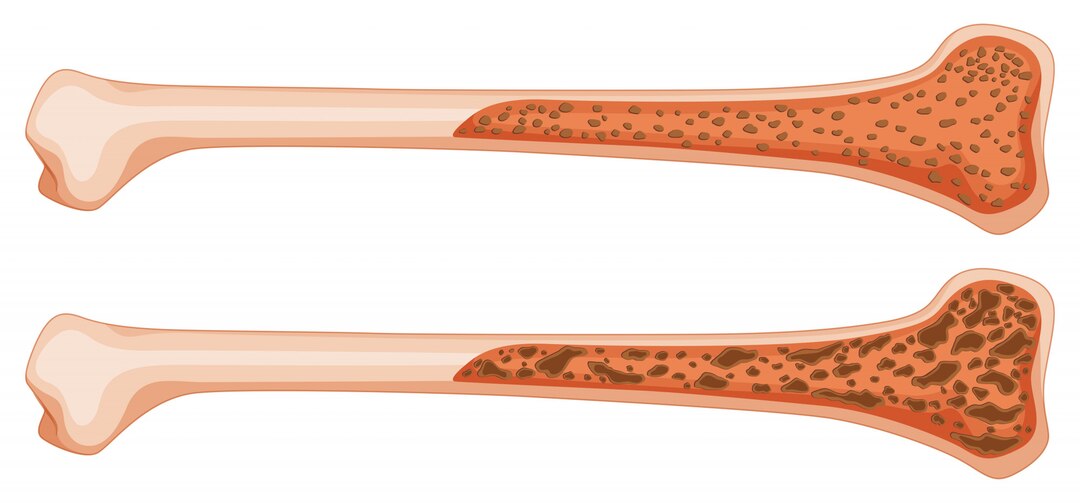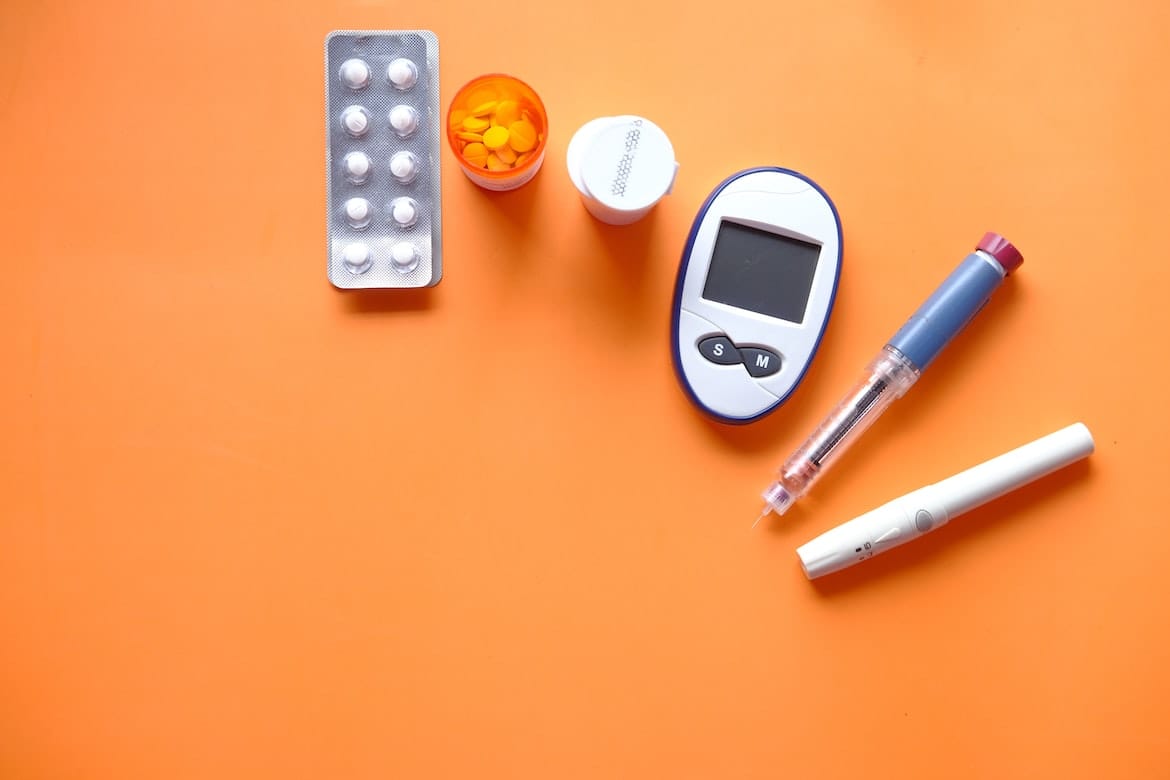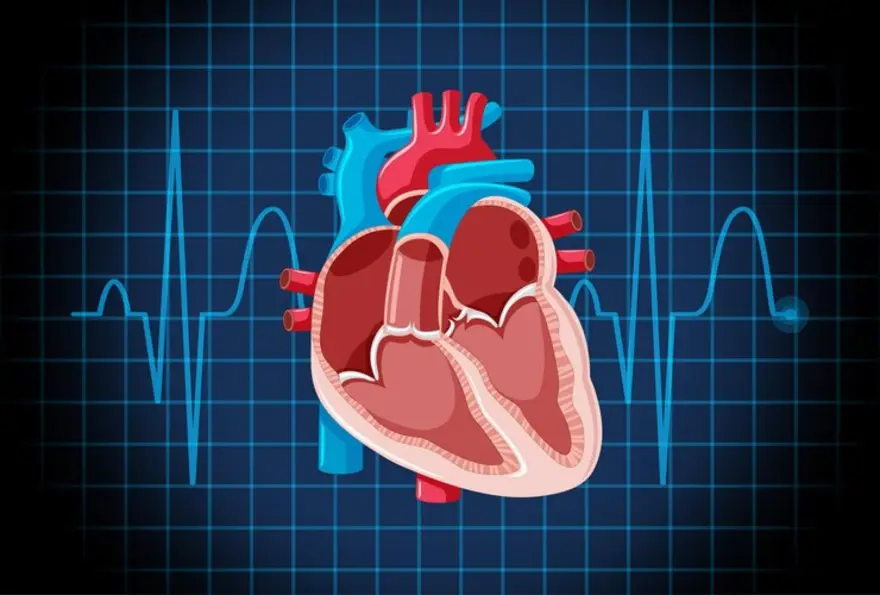metropolis lab
Understanding Conjunctivitis Symptoms and Signs : A Comprehensive Guide
Conjunctivitis, also referred to as pink eye or eye flu, is an eye condition that can make people feel uncomfortable, irritated, and have red eyes. The thin membrane that covers the white area of the eye and the inner surface of the eyelids, the conjunctiva, becomes inflamed, which is how it is identified. To assist you in recognising and comprehending this widespread eye condition, we will break down the conjunctivitis symptoms and indicators in this post. Redness of the Eye The redness of the eyes is one of the main and most obvious signs of conjunctivitis. Because of the pink or red colour of the eye caused by the inflamed blood vessels in the conjunctiva, the condition is frequently referred to as "pink eye." Depending on the underlying cause of conjunctivitis, the degree of redness can range from mild to severe. Itching and Irritation Conjunctivitis frequently causes itching and irritation in the affected eye or eyes. People may feel the urge to touch their eyes to ease the itching, which can range from mild to severe. However, in the event of infectious conjunctivitis, scratching the eyes can exacerbate the illness and possibly transmit the infection. Watery or Discharge from the Eye Conjunctivitis can cause the eyes to tear excessively or discharge. While bacterial conjunctivitis may provide a thicker, yellow or greenish discharge, viral conjunctivitis typically results in a clear and watery discharge. Due to the body's immunological reaction to allergens, allergic conjunctivitis can also result in watery discharge. Swollen Eyelids Conjunctivitis occasionally results in swollen eyelids, making it difficult to fully open or close the eyes. The inflammation that affects the tissues of the eyelids usually causes swelling. Sensitivity to Light (Photophobia) Conjunctivitis can cause photophobia, a condition in which the eyes become sensitive to light. People who have conjunctivitis may experience discomfort and suffering when exposed to bright lights or sunshine. Crust Formation on the Eyelids Particularly after waking up in the morning, bacterial conjunctivitis can cause the development of crusts or "eye boogers" on the eyelids. These crusts develop as a result of dry discharge gathering on the eyelids while you sleep. Foreign Body Sensation Some people with conjunctivitis could feel as though they have grit or a foreign body in their eyes. This sensation may be uncomfortable and increase the desire to massage one's eyes. For early detection and suitable care, it is essential to recognise the symptoms and signs of conjunctivitis. A qualified eye care practitioner must be consulted if you suffer redness, irritation, excessive tearing, or discharge from your eyes in order to make an accurate diagnosis and receive the appropriate treatments. While the majority of conjunctivitis instances are not dangerous and can be treated with self-care or medical procedures, prompt treatment can help reduce discomfort and stop the conjunctivitis from spreading to other people. Keep in mind that having healthy eyes is crucial for sustaining vision and general wellbeing.
From Infancy to Adulthood: Understanding Hypocalcemia as a Persistent Deficiency
Low calcium can have a devastating effect on your overall wellness. Hypocalcemia is a leading condition. It is increasingly plaguing the population beyond the post-reproductive age groups. Besides, its side effects include poor blood clotting, meaning severe blood loss from minor bruises. Check this article to learn more about the hypocalcemia symptoms and how to have them treated at the earliest. Hypocalcemia: Overview Calcium is among the most vital macronutrients your body requires daily. It's synonymous with robust bones and healthy teeth. Besides, it's crucial in natural muscle coordination and circulatory functions. Individuals with poor calcium supply in their diet can experience hypocalcemia symptoms. Hypocalcemia causes acute bone issues, unexplained weight loss, and poor immunity, among severe side effects. These can turn chronic when early signs don't receive prompt clinical attention. Besides, common among individuals have contributing factors like age and underlying complications. Hypocalcemia symptoms: How to recognise the early signs? Whether a brief discomfort while climbing stairs or a sudden back ache when performing domestic chores, hypocalcemia symptoms appear with enhanced deficiency. Never ignore the mentioned symptoms below since low calcium does irreparable damage. Check out the potential signs of calcium deficiency in your body: Unexplained tetany or continuous muscle spasms. Brittle nails with marked stunted growth. Poor wound healing properties. Mental confusion with hallucinatory tendencies. Tendency to get injured from brief abrasion. Sudden numbness of hands and feet. Loss of memory with increasing seizures in epilepsy patients. While immediate consumption of calcium supplements immediately is a preventive step, please consult your physician to get treated for potential hypocalcemia symptoms. Hypocalcemia causes: What are the underlying factors? Hypocalcemia doesn't appear overnight. As your body fails to replenish the macronutrient requirements, the signs turn acute over time. Potential factors include dietary deficiencies as the primary reason, besides age, and poor immunity also spikes the calcium crisis in your body. Check out the contributing factors that could worsen your hypocalcemia: Malnutrition and poverty. Excessive physical work without adequate replenishment. Vitamin D deficiency. Improper parathyroid and thyroid functioning. Aged folks with poor calcium metabolism. Women at menopause. Surgical operations, including treatment of mechanical injuries or removal of thyroid and parathyroid glands. Chronic renal failure. Drug side effects. Acute pancreas ailments. Potential autosomal disorders like DiGeorge Syndrome and muscular dystrophy. Individuals having rheumatoid arthritis. Rapid blood transfusion to compensate for clinical ailments. Hypocalcemia diagnosis: How to catch it early? Hypocalcemia gets promptly detected through manual examination by a registered medical practitioner. Besides, pathological tests and imagery analysis help your specialist pinpoint the affected regions and the prognosis. Here's more about detecting hypocalcemia symptoms: Manual detection through tapping on potential bone joints and muscles to look for unexplained contraction and trauma. Blood test for checking calcium levels (hypocalcemia if the concentration is below 8.8 mg/dl). Tests for detecting anomalies in thyroid and parathyroid glands (these produce hormones responsible for calcium metabolism). Imagery techniques to detect osteomalacia, gouts, osteoporosis and rickets. Hypocalcemia treatment: How to control further advancement of symptoms? The primary hypocalcemia treatment includes prompt replenishment of underlying deficiencies. However, potential recovery is incomplete without addressing the root cause of low calcium in your body. Your physician shall proceed as per the diagnostic report and follow treatment or change existing medications to enhance your blood calcium levels. Here's more about hypocalcemia treatment techniques: Oral medication containing calcium supplements helps replenish the underlying shortage. Your doctor might prescribe vitamin D supplements to ensure better calcium absorption in your body. Treatment of thyroid and parathyroid ailments to naturalise secretion of calcitonin and thyrocalcitonin. Immediate supply of calcium over IV if you are experiencing potential tetany signs. Reorganise your existing medications to ensure natural blood calcium levels. How to prevent hypocalcemia during early signs? Hypocalcemia symptoms are preventable if careful about the infrequent body discomfort as the early signs. Remember, poor tolerance to pain, frequent weight loss, and abrasion from limited impact are alarming signs of calcium deficiency. Besides regular health checkups, here's more about taking a preventive approach to counter low blood calcium: Take care of your dietary intake (milk, beans, cheese, yoghurt, and sea fish). No alcohol since it pulls down your vital mineral concentration. Get treated for existing thyroid/parathyroid issues. Don't ignore frequent body discomfort persisting after laborious work (lower back pain, abnormal spasms, and muscle contractions). Get a complete health check to detect underlying autosomal or autoimmune conditions that degrade calcium levels. Reduce overweight and practice yoga or strength exercises to boost healthy muscle development (boosts calcium metabolism). Who's prone to develop hypocalcemia? Hypocalcemia symptoms are no longer limited to folks above 60. Whether neonatal, teenagers, young adults, or women in menopause, anyone with poor calcium replenishment can experience these symptoms. Check the potential features of individuals prone to develop calcium deficiencies: Newborn babies can experience low calcium levels if the mother has diabetes and contributing complications. Young kids to teenagers could develop hypocalcemia from poor dietary habits. Adults can show poor calcium levels from lifestyle issues (smoking, alcoholism, sedentary lifestyle). Men and women over 50 are prone to hypocalcemia since hormonal changes from menopause disrupt natural calcium metabolism. Individuals with genetic and autoimmune disorders are vulnerable to experiencing calcium deficiency without clinical support. Conclusion Hypocalcemia is a curable condition. Most individuals experience it at least once during their lifetime. Clinical experts suggest a balanced lifestyle and preventive care to ensure your body doesn't experience low calcium levels. Besides, never ignore potential symptoms or rely on OTC drugs for temporary relief without a clinical consultation. CTA: Hypocalcemia treatment requires blood diagnostic tests to ascertain the underlying ailments. Do you need a doorstep collection of your blood samples? Trust Metropolis Labs, thanks to their versatile technicians providing seamless collection and delivery to state-of-the-art testing facilities. For more information about the calcium total serum test, visit Metropolis Labs today.
The Benefits of At-Home Testosterone Testing for Men's Health
Are you feeling tired, irritable, or experiencing a low sexual drive? These are all symptoms that could be related to low testosterone levels. Testosterone is a hormone. It plays an essential role in men's health and well-being. However, as we age, our testosterone levels can decrease. This can lead to a variety of health issues. The good news is that there is now an easy way to test your testosterone levels from the comfort of your own home. In this blog post, we will explore the benefits of at-home testosterone testing and how it can help improve men's health. Testosterone and men's health Testosterone plays a crucial role in men's health. It affects various body functions. These include muscle mass, bone density, and sexual drive. Testosterone also impacts mood and energy levels. Low testosterone levels are associated with fatigue, irritability, depression, and even an increased risk of heart disease. As men age, their testosterone levels naturally decline. However, lifestyle factors such as stress and poor diet can accelerate this process, resulting in low T levels at an earlier stage of life. Low testosterone levels can have serious consequences for overall health. Men with low T-levels may experience decreased muscle mass. This leads to frailty or osteoporosis later in life. They may also suffer from erectile dysfunction (ED). This causes relationship issues or psychological problems like anxiety or depression. Men need to be aware of the potential risks associated with declining testosterone levels and take steps towards maintaining optimal hormonal balance through regular testing and healthy lifestyle choices. The Benefits of At-Home Testosterone Testing The at-home testosterone test is becoming increasingly popular among men looking to monitor their health and well-being. There are several benefits to using an at-home test kit. These include convenience, privacy, and cost-effectiveness. One major advantage of at-home testing is the ability to avoid the hassle of scheduling appointments or visiting a clinic. With an at-home test kit, you can easily collect your samples and send them off for analysis without ever leaving your house. Privacy is another important benefit of at-home testing. Many men may feel uncomfortable discussing issues related to their sexual health with a healthcare provider in person. At-home testing allows individuals to maintain anonymity while still receiving accurate results. Cost-effectiveness is also a significant advantage of at-home testing. Traditional laboratory tests can be expensive, especially if they require multiple visits or follow-up appointments. By contrast, an at-home test kit provides quick and affordable results from the comfort of your home. There are many benefits to using an at-home testosterone test kit that make it an appealing option for men looking to stay on top of their health and wellness. How to Test Your Testosterone Levels at Home Here's a simple guide on how to test your testosterone levels in the comfort of your own home. Firstly, choose an at-home testosterone test kit. It suits your needs and preferences. Many reputable companies offer these kits online or over the counter in local pharmacies. Make sure to read customer reviews. Consult with a healthcare professional if you are unsure about which kit is best for you. Once you have obtained the kit, carefully read and follow the instructions provided by the manufacturer. Most tests require either a saliva or blood sample. These are collected using a cheek swab or finger prick, respectively. Ensure that all necessary precautions are taken during sample collection to avoid contamination. After collecting your sample, securely package it as instructed and mail it back to the designated laboratory for analysis. The lab will then process your sample and provide accurate results within days or weeks, depending on their processing time. Keep in mind that tracking fluctuations in testosterone levels may require multiple tests over time. Therefore, consider repeating this process every few months for a better understanding of patterns related to diet, exercise regimen, or other lifestyle factors affecting hormone balance. Remember that while at-home testing provides convenience and privacy, discussing results with qualified medical experts is crucial before making any significant changes based on findings from such tests. Treatment for low testosterone levels If you do find that you have low testosterone levels, there are various treatment options available. Your doctor may recommend lifestyle changes such as exercise and diet modifications to help boost your hormone levels naturally. In some cases, medication or hormone replacement therapy may be necessary. Remember that everyone's body is different. What works for one person may not work for another. It's important to work with your healthcare provider to determine the best course of action for managing low testosterone levels based on your individual needs. By utilising at-home testosterone testing and seeking appropriate treatment when needed, men can take proactive steps towards optimising their overall health and well-being. Foods that Boost Testosterone Levels One of the easiest ways to increase testosterone production is by consuming foods that promote it. Foods high in zinc have been shown to help with testosterone production. Additionally, vitamin D-rich foods like salmon and egg yolks can also aid in boosting T levels. Incorporating healthy fats into your diet has also been linked to increased testosterone levels. Foods like avocados, nuts (especially almonds), seeds (like pumpkin or flaxseed), and olive oil are great sources of good fats. Conclusion At-home testosterone testing is an easy and convenient way for men to monitor their hormone levels and take control of their health. By regularly testing your testosterone levels, you can identify any potential issues early on and take action to improve your overall well-being. Whether you are experiencing symptoms related to low testosterone levels or just want to stay on top of your health, an at-home testosterone test is an excellent option that provides accurate results quickly. Taking care of our hormonal balance should be considered as important as any other aspect of maintaining good health. You can book a home visit with Metropolis Labs to get your testosterone test samples collected by professional technicians. By monitoring essential hormones like testosterone, we can keep track of our body's changes over time.
Benefits of NextGen HLA Testing: Explains Metropolis' Experts
The NextGen HLA typing procedure helps detect a higher donor and recipient compatibility percentage. This procedure provides unmistakable human leukocyte antigen (HLA) indexing outcomes. It ensures reduced chances of graft rejection among patients receiving foreign haematopoietic tissues and organ transplantation. This high-resolution molecular diagnostic technique helps choose the perfect donor based on the characteristics of the recipient's allele. Check out more about the NextGen HLA typing procedure from Metropolis Healthcare and its state-of-the-art compatibility testing. What to Know About the NextGen HLA Testing? According to Dr Kirti Chadha, Chief Scientific Officer at Metropolis Healthcare, the NextGen testing conveniently scans through the human leukocyte antigen (HLA). This protein has the most diverse loci in the human genome, leading to unique allelic distribution in every individual. It plays a crucial role as the chief determinant of the compatibility of bone marrow and organ transplantation. Without checking for genotypic HLA allelic compatibility, the transplantation can go wrong. The validation of the NextGen HLA typing procedure helps define better genes and detect polymorphisms, resolving potential clinical impacts. How Does the NextGen HLA Typing Function? The NextGen HLA testing detects the percentage of human leukocyte antigen matching between prospective donors and the recipient's genetic setup. It helps match the HLA allelic patterns to measure the approximate similarity of the organs and tissues, reducing graft rejection. The HLA proteins help differentiate self-cells from foreign bodies, preventing auto-immune reactions. Besides, the NextGen HLA typing procedure detects the Major Histocompatibility Complex (MHCs) proteins. It helps evaluate all potential antigen complexes that may cause graft rejection post-transplantation. The NextGen technique reduces all HLA typing ambiguities concerned with tissue and organ transplantation. What Makes the NextGen HLA Typing Procedure Effective? Unlike general HLA tests, the NextGen HLA testing procedure considers parameters more than just the three pairs of human leukocyte antigens. Besides providing an accurate match between the A, B and DR between host and donor, it scans for allelic compatibility of their respective genomes. These factors often get overlooked in general HLA typing and may trigger transplant destruction even in patients with superior HLA compatibility. Next, it also considers primary factors like antibody matching, blood typing, ethnicity and lymphocyte compatibility. These evaluate the chances of HLA activation and graft rejection. The NextGen HLA typing ensures that a recipient receives the most compatible donor for their transplant, lowering any scope for graft rejection. Why Does the NextGen HLA Procedure Provide a Better Compatibility Match? The NextGen HLA typing procedure is more accurate than available HLA typing tests. Its principal design helps find the most compatible donor for their haematopoietic tissues and organ transplantation procedures. Unlike general HLA tests, it considers various factors, as mentioned above. Patients requiring HLA tissue typing for kidney transplants are vulnerable to potential organ rejection. It can wreak havoc on the overall wellness of such ailing patients. Thanks to the NextGen HLA typing procedure, which prevents post-transplantation complications, which often cause the recipient to relapse and even lead to death. While considering underlying genetic and pathological factors, doctors ensure the natural assimilation of transplanted organs for healthy living. It saves valuable life, reduces treatment costs and prevents the wastage of donor organ tissues. What Conditions Get Detected Using the NextGen HLA Typing Test? The role of the NextGen HLA typing procedure extends far beyond transplant compatibility. It is peerless in detecting underlying allelic patterns that can have antagonistic effects like drug incompatibility, auto-immune disorders and prone to develop autosomal sicknesses. The NextGen HLA typing results can detect potential conditions like silent genetic anomalies or inherited autosomal combinations. It includes testing for the below conditions: Celiac disease Narcolepsy Spondyloarthritis Ankylosing spondylitis Crohn's disease Psoriatic and reactive arthritis Sacroiliitis Uveitis Pathogenic infections Cancer Emphysema Besides, early detection of these conditions helps prompt treatment to slow down the rapid degeneration of the illness. The NextGen HLA typing procedure helps doctors detect underlying conditions with little surface symptoms. Also, if your blood comprises significant anti-HLA antibodies, it helps detect other health anomalies that may or may not include immunological factors. Final Take Besides the effectiveness of the NextGen HLA testing technique, here is what Dr Sushil Shah, Chairman of Metropolis Healthcare, shared the unique selling point about the organisation. In recent years, Metropolis Healthcare has established a centre of excellence supporting all transplant-related diagnostic techniques. It includes a state-of-the-art array of diagnostic tools, accurate report interpretation, expert laboratory technicians and dedicated subject matter specialists. According to the chairman, it makes Metropolis Healthcare a one-stop destination for all transplant-related diagnostic solutions. He also highlighted how the NextGen HLA typing helps doctors find the ideal donor for recipients and ensure better transplantation records.
Sample Collection for Reliable Pediatric Diagnostic Services
Pediatric diseases need to be handled with immense care to ensure that children receive timely and accurate medical care; hospitals and clinics need to increase the availability of specialized pediatric diagnostic services while conducting pediatric tests. Establishing peadiatric centres for excellence that focus mainly on children's care is also vital. Creating a team of qualified and experienced professionals can contribute to improving the quality of paediatric blood tests and diagnostic services provided. Having staff that is well trained in the use of cutting-edge technology and equipment can also help provide a more accurate diagnosis. Hear what our expert Dr Nilesh Shah, President and Chief of Science and Innovation at Metropolis Healthcare Ltd. has to say. Understanding the need for better pediatric testing While India's healthcare system has made significant strides in recent years, the pediatric infrastructure has not kept pace with this rapid development. One of the most significant changes required is to provide urgent attention to how pediatric testing and diagnosis are carried out. According to a report by ICMR 2022, less than half (48%) of the public tertiary hospitals have a paediatric oncologist. And even fewer had paedriticoncosurgen (14.2%), paediatric intensivist (38.9%), paediatric medical oncologist (46.7%), and palliative care physician (37.6%). These statistics clearly show the lack of proper infrastructure for pediatric care. Here are a few tips that can help enhance India's paediatric infrastructure and create the ideal healthcare system by focusing on better diagnosing pediatric diseases. Boost specialised paediatric diagnostic services For children to receive proper and timely medical care, hospitals and clinics must increase the availability of specialised diagnostic services for paediatric diseases. This can be done by establishing paediatric centres of excellence that are solely focused on children's care. Hiring more qualified professionals specialised in paediatric care who have the experience to back it up can also help improve the quality of paediatric diagnostic services we provide. Upgrade existing diagnostic equipment Most clinics and hospitals are usually out of date and have inadequate diagnostic equipment that does not meet the needs of children. This is why all paediatric care centres need to upgrade their existing equipment. Getting better equipment can also be a low-cost way to improve the quality and efficiency of the healthcare setting. The availability of cutting-edge equipment and technology is vital to diagnose and treat paediatric patients effectively. Promote screening and early diagnosis Critical for the effective treatment of paediatric diseases, the early diagnosis of paediatric diseases can result in prompt treatment, improving health outcomes and reducing the risk of complications. Educating parents, guardians, primary caregivers, and healthcare professionals about the importance of early diagnosis is another way of strengthening India's paediatric infrastructure. Mobile diagnostic units Diagnostic services are limited in rural areas, another important factor that negatively impacts children's health. By establishing mobile diagnostic units for paediatric diseases, doctors can travel to remote and underserved regions of India and provide them with medical services they are otherwise not privy to. The units should be equipped to perform on-site testing that allows patients to receive diagnosis and treatment plans faster. This solution also reduced overall healthcare costs as patients no longer need to travel to a medical facility to get the care they deserve. Paediatric friendly infrastructure Children's healthcare needs are unique, requiring specialised facilities and equipment for adequate care. Creating a safe and comfortable paediatric-friendly environment can improve the child's experience in the hospital while alleviating the stress and anxiety of both parents and children. The environment can also play a significant role in improving children's healthcare outcomes. A paediatric-friendly environment helps healthcare professionals efficiently diagnose, treat, and manage a broader range of paediatric conditions. It also aids in preventing the spread of infections and reducing the risk of medical errors, which are particularly important in paediatric diseases. Paediatric reports and sample collection The approach towards paediatric healthcare is very different from that of adult healthcare. Children need to undergo specific tests and procedures that differ from adults. Offering customised paediatric reports and sample collection can ensure that the child gets the appropriate test and procedure for their age and development. In the same way, providing results tailored to the child's developmental stages is easier to understand by parents and caregivers that do not have too much of medical background. This ensures better care and proper treatment for the ailing child. Creating a national paediatric diagnostic database A national paediatric database can play a critical role in bolstering the paediatric infrastructure of India. This database can provide vital information about the prevalence of paediatric diseases, the available diagnostic facilities, and the quality of care offered at these facilities. With the help of this database, healthcare providers can also identify any area that may need a little more investment to better the paediatric infrastructure. Conclusion While there are several hurdles in the way of this development, they can be valuable tools for improving paediatric healthcare and its outcome in India. Suppose the government, healthcare professionals, and private sector work together to address India's paediatric healthcare challenges. It will ensure that every child has access to the quality of healthcare they deserve and significantly impact the overall health outcome of children in India.
Metropolis Expert Speaks About Curing Cancer with Bone Marrow Transplant
A bone marrow transplant (BMT) is a medical procedure that involves replacing damaged or diseased bone marrow with healthy bone marrow stem cells. It is a treatment option for a variety of conditions, including certain types of cancer, autoimmune diseases, and inherited disorders. While a bone marrow transplant is a complex procedure, it offers hope to many people with life-threatening conditions. This blog provides an overview of bone marrow transplants, including their types, procedures, and recovery processes. It shares expert insights from Dr Sanjay Gohil, Head of Haematology and Transplant Immunology, Metropolis Healthcare Limited, Mumbai, on how to cure bone marrow transplants. What is a Bone Marrow Transplant? In India, there are more than 2,000 bone marrow transplants performed annually, and the number is rapidly rising. Increased BMT centres, access to standardised care, and modern technologies all greatly contribute to the procedure's safety. A stem cell transplant, also known as a bone marrow transplant, is a life-saving procedure in which the body is transfused with healthy blood-forming stem cells to replace defective or cancer-affected bone marrow.The supple, spongy tissue found inside bones is called bone marrow. The majority of the body's blood cells are generated, stored, and then discharged into the peripheral circulation. White blood cells, red blood cells, and platelets can all be formed from stem cells, which are the parent cells typically found in the marrow. BMT employs these stem cells. Autologous and Allogenic Bone Marrow Transplant The transplantation of stem cells may be autologous or allogenic. The patient is the donor in an autologous transplant. After undergoing intense therapy, the patient's frozen stem cells are returned after being removed from the patient via bone marrow harvest or apheresis (a technique for collecting peripheral blood stem cells). In allogeneic bone marrow transplants, stem cells are obtained from a genetically compatible donor—typically a sibling or sister—rather than from parents or other unrelated genetically compatible donors, who can be found through national bone marrow registries. Cord blood transplants are an additional allogeneic transplant type that uses stem cells from umbilical cord blood. Bone Marrow Transplant Procedure In specialised transplant immunology (HLA) labs, blood samples from donors and recipients are examined for the presence of human leukocyte antigen (HLA). After the initial transplant examination, the receiver has a procedure called "conditioning," where they receive chemotherapy and radiation to kill cancer cells that might spread to other regions of the body, suppress the immune system, and prepare the bone marrow for the new stem cells. Similar to a blood transfusion, stem cells are injected into the bloodstream after this myeloablative therapy. A process called engraftment helps transfused stem cells enter the bone marrow and start replicating and creating new, healthy blood cells. Engraftment typically occurs between days 15 and 30 after the transplant, depending on the type of disease being treated and the transplant. Bone Marrow Transplant Side Effects Blood counts are regularly examined to assess whether engraftment has been successful. Delays in engraftment may be caused by concurrent infections, a low number of donor stem cells, graft failure, and medications. Some individuals may experience difficulties following a bone marrow transplant, including infections, respiratory problems, bleeding due to low platelets, graft failure, and graft vs. host disease. A bone marrow transplant can result in a significant and potentially fatal complication called graft-versus-host disease (GVHD). When the immune system of the donor responds to the tissue of the recipient, GVHD results. The long-term prognosis of BMT varies from patient to patient. It also depends on factors such as the patient's age and general health, transplant type, HLA matching, type and severity of the disease being treated, disease response to treatment, adherence to medication and severity of complications. Bone Marrow Transplant Success Rate The success of bone marrow transplants has been considerably enhanced by emerging technology as more and more transplants are performed to treat various disorders. Following a bone marrow transplant, the patient needs ongoing follow-up care. The best chance for a successful bone marrow transplant is provided by a team of transplant specialists that consists of a medical oncologist or haematologist with specialisation in transplant, a lab transplant immunologist, a nurse coordinator, a social worker, a dietician, and a physiotherapist, as well as GI and respiratory specialists. Still, there is a huge gap between supply and demand that needs to be closed, and BMT production should be done at reasonable costs. Metropolis Expert on Bone Marrow Transplant Dr Sanjay Gohil has shared his expert insights on how to cure bone marrow transplants. He believes that a bone marrow transplant is a powerful treatment option that can offer hope to many patients. However, he emphasises the importance of selecting the right donor for an allogeneic transplant, as the success of the transplant depends on a good match between the donor and the patient. He also stresses the importance of close monitoring during the recovery phase to prevent and manage potential complications. Conclusion In conclusion, bone marrow transplantation is a complex but promising treatment option for many life-threatening conditions. Patients and their families should be well informed about the procedure and its potential risks and benefits. With the right donor and close monitoring during the recovery phase, bone marrow transplants can be a successful way to cure certain diseases.
Diabetes in Children: Types, Symptoms & Management
Diabetes is a common chronic condition affecting people of all ages including children. As per the estimated results, around 463 million people worldwide were diagnosed with diabetes in 2019. But now, more than 500 million adults are estimated to be living with diabetes. Millions of children worldwide also have this medical condition. According to Dr Moumita Misra, Head-Lab Operations, Metropolis Healthcare Mumbai,diabetes is a serious problem for children and adults as it can cause serious health complications. It can result in several risks to life, especially if left unchecked for a long time. India is the diabetic capital of the world and the number of children affected by it are increasing every day. What is Diabetes? Diabetes is a medical condition characterized by higher blood sugar levels than normal. It occurs when the pancreas either does not produce enough insulin or when the body does not respond to the insulin produced. When either of these happens, the body cannot absorb sugar from the blood, resulting in excess blood sugar levels. Incidence of Diabetes in Children Previously, type 1 diabetes was found to be the most widespread form of diabetes affecting children and adolescents. So it was referred to as juvenile diabetes. This type of diabetes results from malfunctioning of the pancreas, which does not produce a hormone called insulin. This hormone is responsible for facilitating the absorption of sugar or glucose by the cells in the body, thus providing them with the necessary energy. But now, younger people are also getting diagnosed with type 2 diabetes, referred to as adult-onset diabetes. The increasing prevalence of obesity has also caused it to become more common in children and teenagers. This condition results in the (child's) body's inability to effectively produce and use insulin. Children pose a higher risk of type 2 diabetes if they are overweight, have very little physical activity, have a history of diabetes in the family, etc. Causes of Diabetes in Children The exact cause of type 1 diabetes is still unknown but genetics and environmental factors are believed to cause this condition. If left untreated, high blood sugar levels can lead to life-threatening complications. Modern lifestyles with increased consumption of processed or junk food, reduced physical activity and prolonged screen time are all leading to the growing incidence of childhood obesity. It is often linked to metabolic syndrome and polycystic ovary syndrome. These two syndromes are proven risk factors for the development of type 2 diabetes. Children with a family history of diabetes might get diagnosed with this medical condition. Additionally, pregnant women who develop diabetes are at a higher risk of giving birth to infants with a risk of developing type 2 diabetes. Symptoms of Diabetes in Children Parents can ensure early detection of diabetes in their children by looking out for the following symptoms: Increased thirst Extreme hunger Frequent urination Fatigue Blurred vision Dehydration Fruity smelling breath Behaviour change or irritability Tired and thinner Diagnosis of Diabetes in Children Taking your child to the hospital immediately is important if they experience any symptoms of diabetes. These are some of the methods that help diagnose diabetes in children: Type 1 Diabetes Random blood sugar test Glycated haemoglobin test: Testing the child’s average blood sugar for 3 months (the past 3 months). Fasting blood sugar test: A blood sample is taken from a child who hasn't eaten anything for hours. Type 2 Diabetes Random blood sugar test Fasting blood sugar test Glycated haemoglobin test Oral glucose tolerance test: The test is conducted after the child fasts for a night and then is given a sugary liquid. Treatment for diabetes includes medication and monitoring of blood glucose levels. Treatment of Diabetes in Children Taking insulin injections Children with type 1 diabetes must take insulin injections daily. Rapid-acting insulin, intermediate-acting insulin, long and ultra-long-acting insulin and short-acting insulin are the different types of insulin. Blood sugar monitoring At least 4 times a day, blood sugar monitoring may be advised. Continuous glucose monitoring Continuous glucose monitoring using temporary monitoring of the skin installed underneath the skin may be essential for some children. Medication Medicines like Metformin (Glumetza) and Liraglutide (Victoza) are prescribed for type 2 diabetes in children. How Can Diabetes in Children Be Prevented? Maintain healthy eating habits and body weight. Cut down on too much consumption of junk food Ensure your children engage in regular physical activities (make them stay active). Limit their screen time on tv, computer and other appliances. Ensure that they are getting enough sleep. Check their blood sugar levels on a routine to make small changes in their food, physical activities, etc. Conclusion Diabetes in children may be overwhelming at times but your child is not alone. There are support groups where you can connect with other parents of children living with diabetes. Diabetes can be controlled by making the necessary lifestyle changes and your child can live a normal life with medications. In case of any queries, you must reach out to your child’s diabetes care team, they can address all your queries and can help your family to move ahead in this journey of living with childhood diabetes.
 Home Visit
Home Visit Upload
Upload





















 WhatsApp
WhatsApp